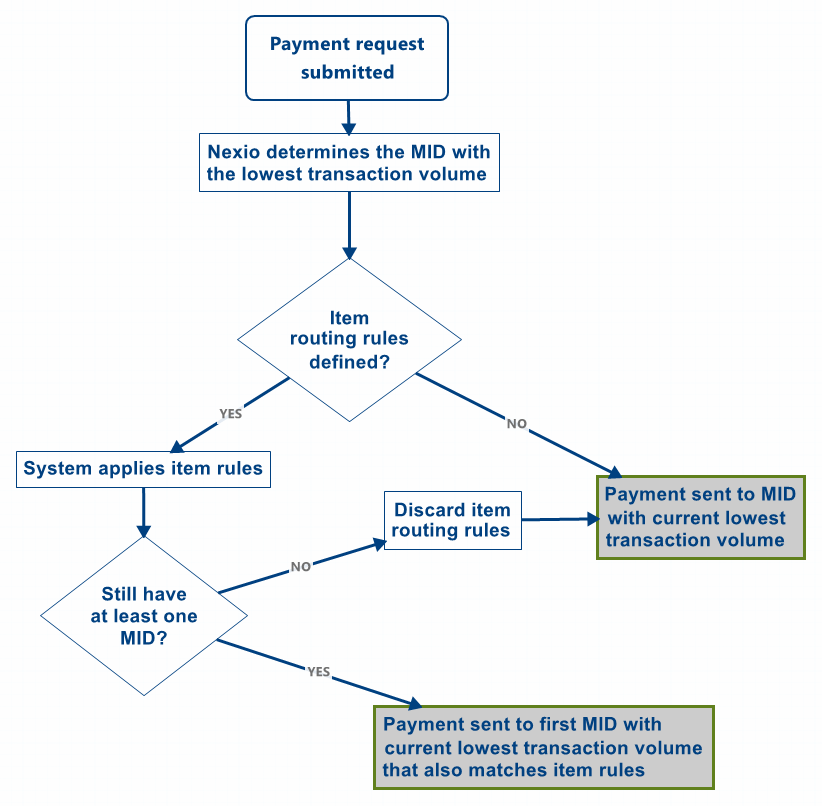What happens after you set up item routing?
After you configure payment routing by item, the following process happens for each transaction (using CBD as the example):
-
A consumer adds an item to the shopping cart where the
typeis 'CBD' and submits payment.For example,
data.cart.items[1].typeequals 'CBD' and the transaction currency is 'USD'. -
The Nexio system determines the merchant account (MID) with the lowest monthly gross of authorized transactions (also known as transaction volume).
For example, suppose MID #1, MID #2, and MID #3 can support the currency and MID #4 does not. Only the first 3 are considered.
Then, if MID #1 has a current volume of $4,500, MID #2 is $10,300, and MID #3 is $8,000, the system prioritizes them as follows:
- MID #1
- MID #3
- MID #2
In this case, MID #1 has the lowest transaction volume.
-
The system checks whether there are any item routing rules with any of the applicable MIDs.
For example, MID #1 has a rule about the type being 'CBD', MID #2 has a rule about the description containing 'CBD', and MID #3 has a rule about the type and item containing 'CBD'.
If there are not any item routing rules, the system skips to step 5 in this sequence.
-
Based on the items in the cart and the item routing rules, the system identifies which of the MIDs can process the transaction.
For the following examples, MID #1 has a rule about the type being 'CBD', MID #2 has a rule about the description containing 'CBD', and MID #3 has a rule about the type and item containing 'CBD'.
Example 1:
Filtering when only type is 'CBD' The MIDs would be prioritized as follows: - MID #1Example 2:
Filtering when both type and item are 'CBD' The MIDs would be prioritized as follows: - MID #1 - MID #3Example 3:
Filtering when type is 'CBD' and description and item both contain 'CBD' The MIDs would be prioritized as follows: - MID #1 - MID #3 - MID #2Example 4:
If applying the item routing rules results in no possible MIDs to process the transaction, the system ignores the rules.
Filtering when description is exactly 'CBD' The list is empty, therefore the system removes the rule filtering, resulting in the following priorities for the MIDs: - MID #1 - MID #3 - MID #2 -
The system routes the payment to the MID at the top of the list.
The following image shows a high-level view of the payment flow from above when you are using item routing with multiple MIDs.

Item Routing Flow
Updated 4 months ago
